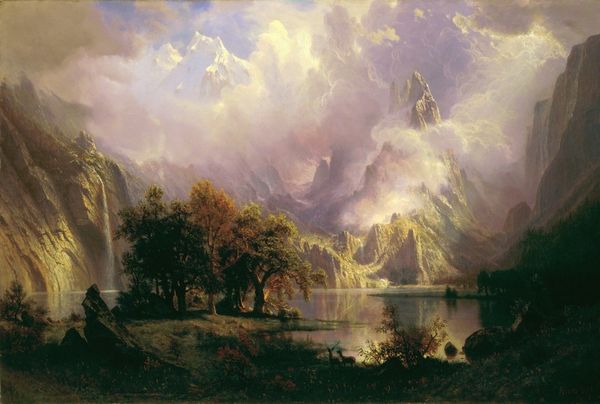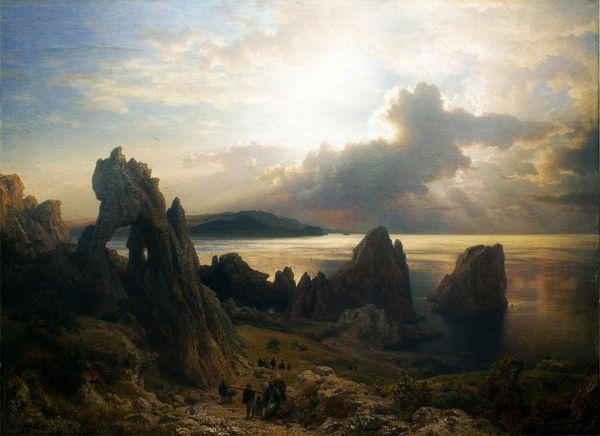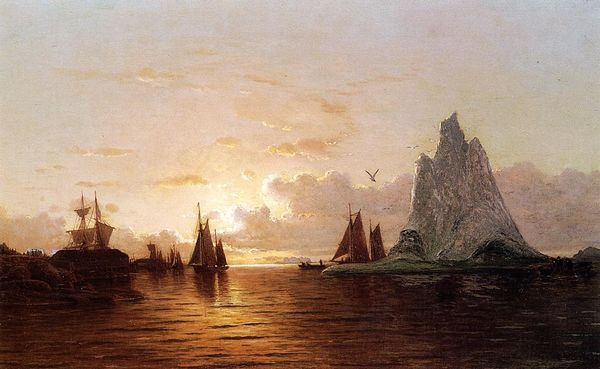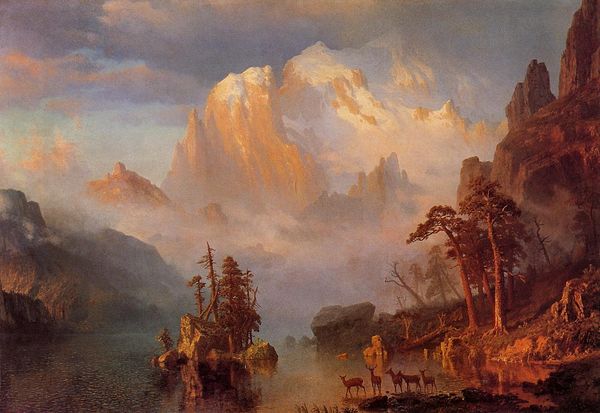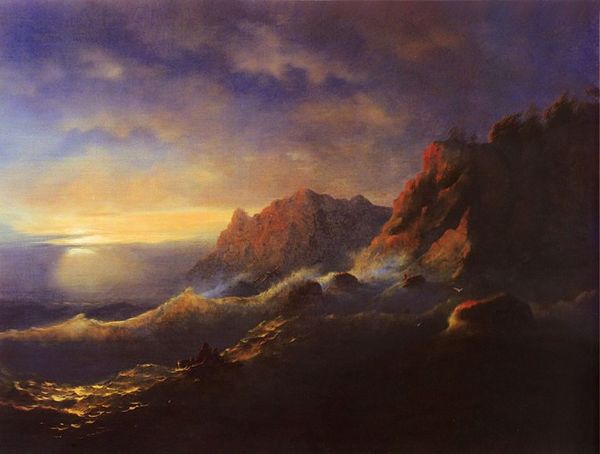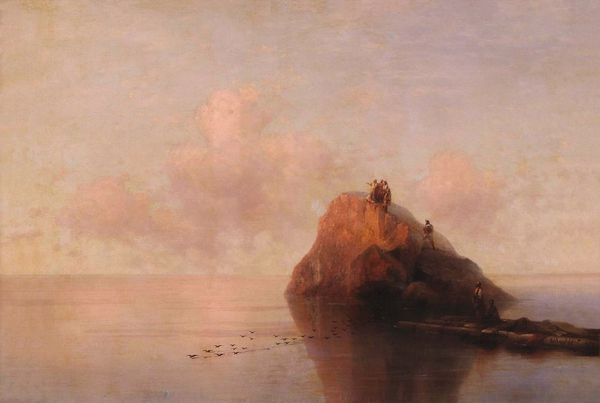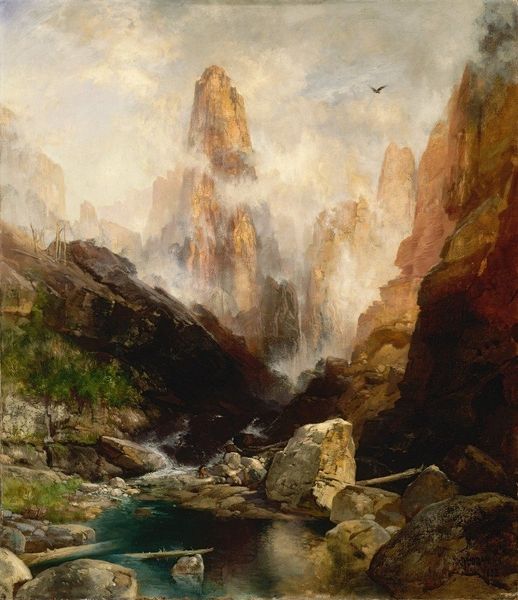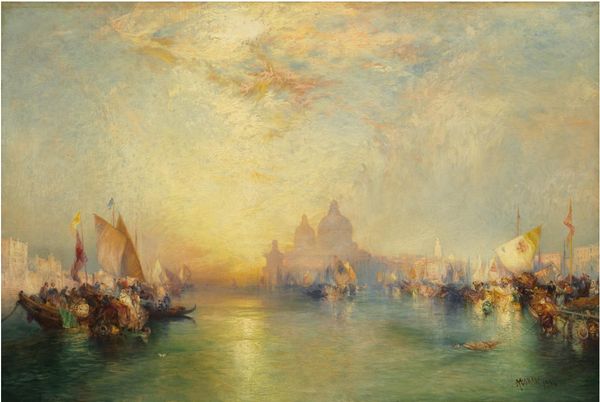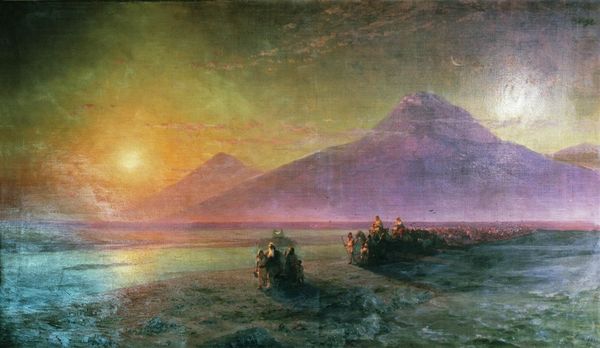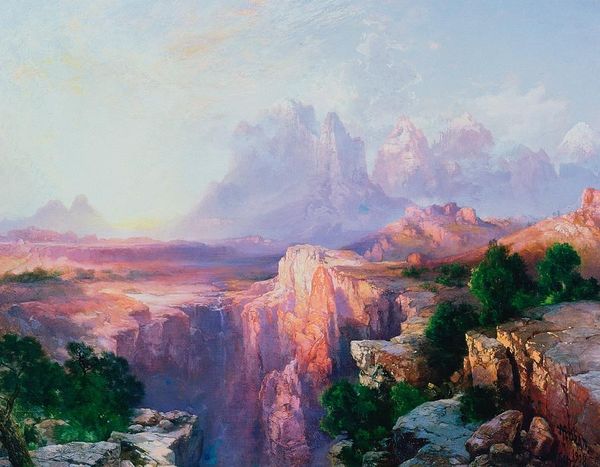
Dimensions: 64.5 x 77.2 cm
Copyright: Public domain
Editor: This is “The Dream City” by Thomas Moran, painted in 1919. It appears to be oil and watercolor on canvas. It gives off a serene, almost ethereal vibe. What compositional elements stand out to you in this piece? Curator: The interplay of light and shadow is critical. Note how Moran uses aerial perspective to suggest depth; forms become less distinct and cooler in color as they recede. Observe the almost geometric clarity of the architectural forms juxtaposed with the amorphous mist, a tension that structures the entire image. Editor: That contrast between the geometric shapes and the mist is interesting. Is he playing with formal elements to create a specific feeling? Curator: Precisely. Consider how the verticality of the mountains and towers is echoed and then softened by the horizontal expanse of the water and sky. The color palette, largely muted blues and yellows, contributes to the painting's dreamy atmosphere. What semiotic possibilities arise from this restrained use of color? Editor: Semiotic possibilities? Well, the blues could represent tranquility, while the yellows could symbolize enlightenment or hope. Curator: Indeed. Moran masterfully employs formal techniques to evoke a sense of idealized beauty. Did anything surprise you about the materiality or structure of the painting itself? Editor: I hadn't thought about it in terms of formal structures, but breaking down the geometric and atmospheric elements definitely adds a new layer of understanding. Curator: Likewise, considering how Moran organizes visual forms and hues opens paths toward the poetic, reminding us that observation involves both sensation and sensemaking.
Comments
No comments
Be the first to comment and join the conversation on the ultimate creative platform.

